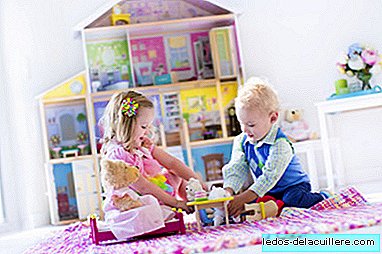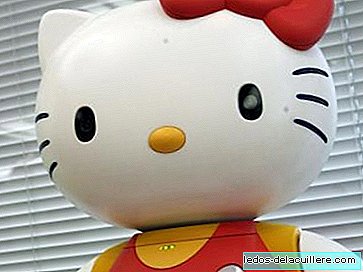
We all know the importance of free play in childhood and not conditioned by gender stereotypes. But it is not always easy to break the social barriers we see through advertising, for example, or deal with the comments and prejudices of some people.
Therefore, the University of Kent, in England, has carried out a study that has recently published in the magazine Sex Roles on how children's minds influence seeing images of stereotyped games and toys. How does gender-conditioned play affect their lives?
An image and a message were enough to change the minds of some children
The experiment was conducted by experts among a group of British children four to seven years old. They were separated into two groups and shown different scenes and game messages:
- A group was shown images of a girl and a boy playing with stereotyped toys.
The message that could be read under the image of the girl was "Hello! My name is Sarah. My favorite toy is a My Little Pony! I have a lot and play with them every day.". As for the image of the child, the following message could be read: "Hello! My name is Thomas and I like to play with my cars every day. They are my favorite toys!".
- The other group were shown the images and their respective messages changed, that is, Sarah appeared playing with cars and Thomas with ponies.
After seeing the images, each group received a set of toys that, socially, can be considered of a certain genre, such as babies, tea sets, fighter jets and tools. And they were asked: Who should play with each of these toys?

The children of the second group, that is those who did not see images or stereotyped messagesThey were flexible in their responses and were more open than those of the first group to the idea that both boys and girls could play with any toy. In addition, they showed a greater willingness to play with children of the opposite sex than the members of the first group.
However, and as a curious fact, in neither of the two groups did the children choose for themselves socially designed toys for the opposite sex.The researchers stress the importance of realizing that the children in this study were only subjected to an image and a message, and even so, changes in the attitude and way of thinking of one of the groups were already appreciated.
Therefore, they insist that if the hundreds of stimuli and messages they receive daily are contrary to the stereotyped models dictated by society, the children would become much more open to enjoy a wide variety of toys, without being conditioned by their gender.
Stereotype reinforcement through advertising
We have repeatedly echoed the gender stereotypes and roles which sometimes shows advertising through toys. But unfortunately, sexism and role-building is not something exclusive to advertisements, and according to psychologist Laura Zimmermann of Shenandoah University in Virginia, "There are strong pressures in other areas of society that also influence".
Laura Zimmermann participated in another study where it was analyzed the influence of toy ads on preschoolers. And although it was seen that children now show greater flexibility than before when it comes to saying to whom a certain toy is aimed, when asked about their own preferences their responses become stereotyped.
The psychologist insists on the importance of not limiting or conditioning children in their choices based on gender stereotypes, and letting them play freely with the toy they choose.
In this way, children will acquire many more skills than if they were limited to playing with those games or toys classified as "boys" or "girls".For example, it is known that constructions, blocks or puzzles - toys that have traditionally been considered "masculine" - foster spatial and visual skills. While games traditionally considered "feminine" (dolls, kitchens, little houses ...) encourage communication and social skills. Why develop a single skill Can you develop them all giving freedom in the game?
The importance of mixed game

Developmental psychologists claim that between 2 and 3 years, children begin to be aware of their gender, and from that moment on they designate the people around them according to their feminine or masculine sex. Likewise, they begin to establish rules and create categories of behaviors, attitudes, tastes, interests ... according to each gender.
Boys and girls look different, but the images, stimuli and behaviors they see around them will reinforce stereotypes, or on the contrary expand your horizons and see the endless possibilities that open before them through the game.
Likewise also It is important to encourage mixed play, so that boys and girls recognize similar behaviors in the other sex, and end up understanding that everyone, regardless of their gender, likes to play similar things.
In short, adults we must not mark the path of children's play through stereotypes, although it is not about eradicating the child's choice if it is linked to a certain role. Giving them freedom and allowing them to be what they want through symbolic play has countless benefits in their development.
Therefore, let's promote free and mixed play since they are babies, and offer our children the greatest range of game possibilities, always respecting their decisions.Via New York Times
In Babies and More The sexist catalogs of this Christmas arrive: they hairdressers or moms, they pilots or superheroes, "Who are the parents to veto the dreams of our children?" We talk to Fanny, mother of a child who wants to be a dancer, Children also play with babies, So yes: the catalog of toys that breaks with gender stereotypes and that other toy stores should imitate, The gender stereotypes that we transmit to our children , Toy ads transmit sexist models to children, Finding non-sexist games and toys is not that difficult!












